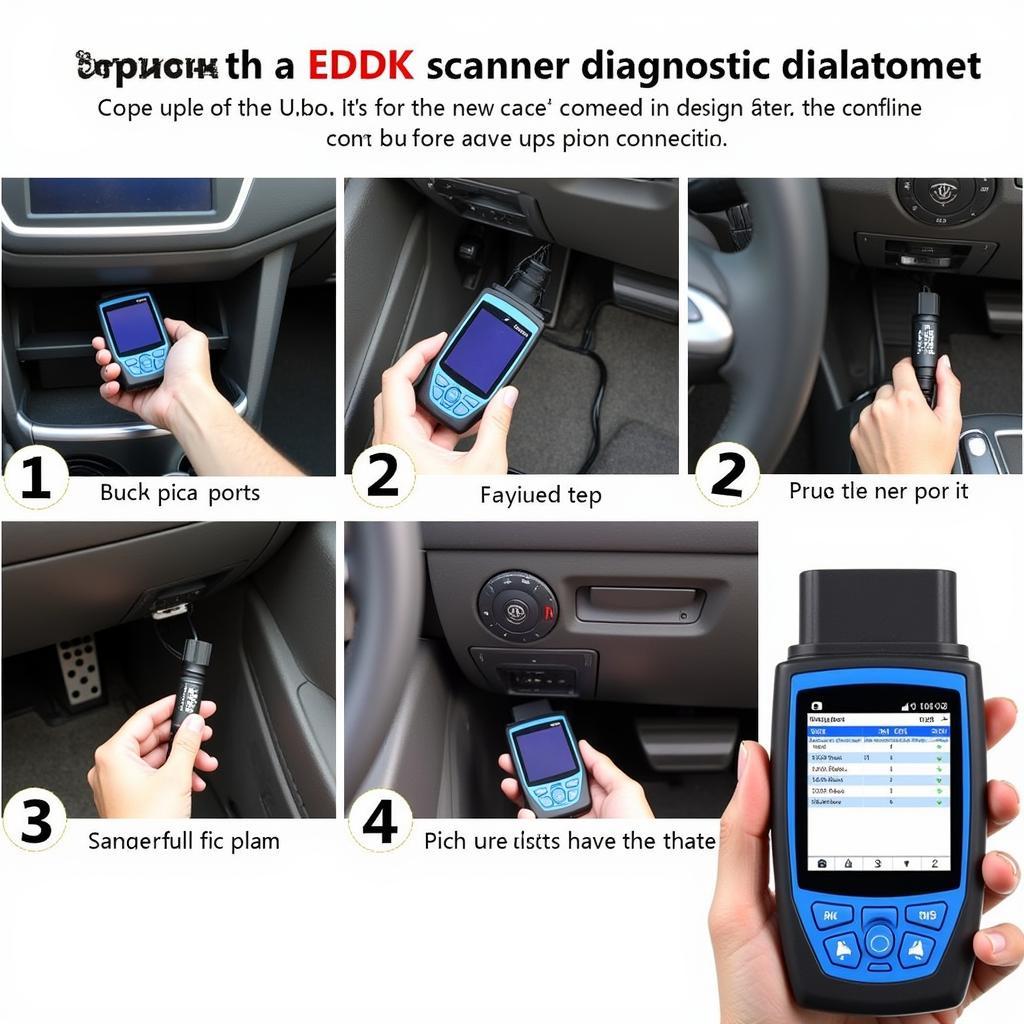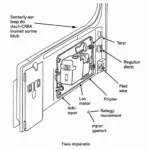Understanding how to read a car diagnostic test is crucial for any car owner. It can save you time, money, and unnecessary stress in the long run. This guide will provide you with the knowledge you need to decipher those cryptic codes and take control of your car’s maintenance.
A car diagnostic test, also known as an OBD-II scan, is a vital tool for understanding your vehicle’s health. It provides insights into potential issues by reading trouble codes stored in your car’s computer. These codes, seemingly random combinations of letters and numbers, are actually standardized and can reveal a wealth of information about the underlying problem. Knowing how to interpret these codes empowers you to address issues promptly and make informed decisions about repairs. You can find resources like the dash car diagnostic app to help you understand these codes.
Understanding OBD-II Trouble Codes
OBD-II, or On-Board Diagnostics II, is a standardized system that allows external devices to access diagnostic information from a vehicle’s computer. The system uses a standardized set of trouble codes, also known as Diagnostic Trouble Codes (DTCs), to indicate specific malfunctions. These codes typically consist of a letter and four numbers. The letter indicates the system affected (e.g., “P” for Powertrain, “B” for Body, “C” for Chassis, “U” for Network). The numbers provide further details about the specific fault within that system.
Decoding the Numbers
Each DTC is designed to pinpoint a specific problem area. For instance, P0301 indicates a misfire in cylinder 1, while P0420 suggests a problem with the catalytic converter system efficiency. It’s important to note that these codes don’t always provide a definitive diagnosis, but rather point you in the right direction for further investigation. Learning how to read these codes is like learning a new language, one that allows you to communicate with your car and understand its needs. Resources like free car diagnostic courses online can be invaluable in mastering this language.
Using a Diagnostic Scanner
A diagnostic scanner is the tool you need to read these trouble codes. They range from basic code readers to advanced professional-grade scanners. Basic scanners typically display the DTCs and allow you to clear them. More advanced scanners offer live data streaming, allowing you to monitor sensor readings in real-time, which can be incredibly helpful for diagnosing intermittent problems. Consider exploring options like the ctech obdii advanced bluetooth car diagnostic scan tool pin.
Connecting the Scanner
Most scanners connect to the OBD-II port, usually located under the dashboard on the driver’s side. Once connected, the scanner can retrieve the stored trouble codes. It’s essential to understand that simply reading the codes is just the first step.
Interpreting the Results
After retrieving the codes, you’ll need to interpret their meaning. A simple online search of the DTC will usually provide detailed information about the potential causes and solutions. While you can find helpful resources like diagnostic all modern cars free software download, remember that a code doesn’t always mean a direct replacement part. It could be a loose connection, a faulty sensor, or something else entirely. “Diagnosing a car problem is like detective work,” says Jake Carter, a certified master mechanic with over 20 years of experience. “The codes provide clues, but you need to put all the pieces together to get the full picture.”
Further Diagnosis
Once you have a potential cause, further diagnosis may be necessary. This could involve checking wiring, testing sensors, or using more advanced diagnostic tools. It’s crucial to approach the problem systematically and avoid replacing parts unnecessarily. “Don’t throw parts at the problem,” advises Carter. “Take the time to understand the underlying issue before spending money on parts you might not need.” Consider looking into the best car diagnostic tool app to assist in your diagnostic process.
Conclusion
Learning how to read a car diagnostic test is an invaluable skill for any car owner. It empowers you to take control of your vehicle’s maintenance, diagnose problems effectively, and make informed decisions about repairs. By understanding these codes, you can save both time and money, and ensure your car stays running smoothly.
FAQ
- What is an OBD-II port? It’s the standardized port used to connect a diagnostic scanner to your car’s computer.
- Can I clear the codes myself? Yes, most scanners allow you to clear the codes, but this doesn’t fix the underlying problem.
- What if the code reappears after clearing it? This indicates a persistent problem that requires further investigation.
- Are all diagnostic scanners the same? No, they range from basic code readers to advanced professional-grade scanners.
- Do I need a scanner to read the codes? Yes, you need a device to access the data from the OBD-II port.
- Where can I find more information about specific codes? A simple online search will usually provide detailed information.
- What should I do if I don’t understand the results? Consult a qualified mechanic for further diagnosis and repair.
Need support? Contact us via WhatsApp: +1(641)206-8880, Email: [email protected]. We have a 24/7 customer support team.



